March 2023
SPRING IS IN THE AIR
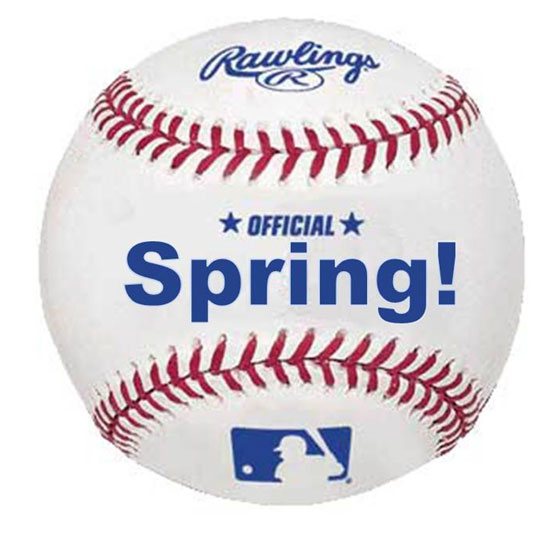
Athletic Field Covers and Tarps
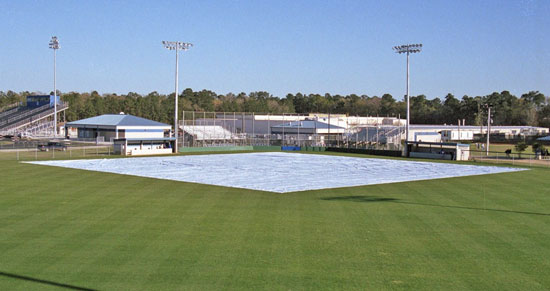
Protect your athletic field areas from rain, wind, or harsh sun. You put a lot of time and effort into maintaining your field; let us help keep you covered. We have a full line of products whether you need full tarps, skin tarps, home plate and pitching mound area tarps, infield batting practice turf protectors, or to track and sideline protectors.
Turface mvp / pro's choice red
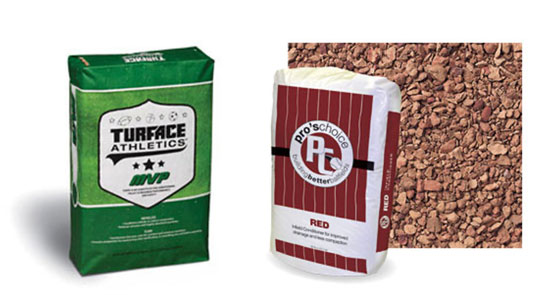
Turface MVP® — Fights infield compaction that leads to running, sliding and ball hop injuries. MVP holds moisture, nutrients and increases drainage due to balanced air and water pore space. Absorbs its weight in water. Play can resume quickly after rain.
Pro's Choice Red — Designed to meet the challenges of wet, dry or compacted infields, this durable granule helps create passageways for drainage and eliminate compaction for truer bounces and safer play. Turface
MVP item #434503 - 50 lb. bag
Pro’s Choice Red #60300 - 50 lb. bag
Contact your Conserv FS Turf specialist for more information.
Pennmulch Seed Accelerator
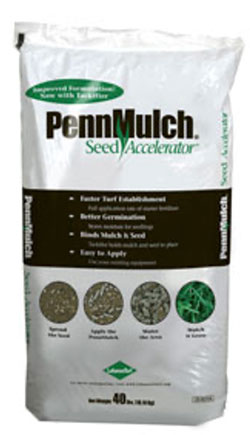
PennMulch Seed Accelerator conserves moisture to improve seed establishment. It increases turf density, minimizes weed outbreaks, and provides a full application rate of starter fertilizer. PennMulch now comes with Tackfier to hold seed, soil, and mulch in place. Now sold in a 40 lb. bag.
- Faster turf establishment, includes starter fertilizer.
- Better germination, stores moisture for seedlings.
- Binds mulch & seed
- Improved formulation now with tackifier to hold mulch and seed in place
- Easy to apply
Penn Mulch Item # 607040 - 40 lb bag
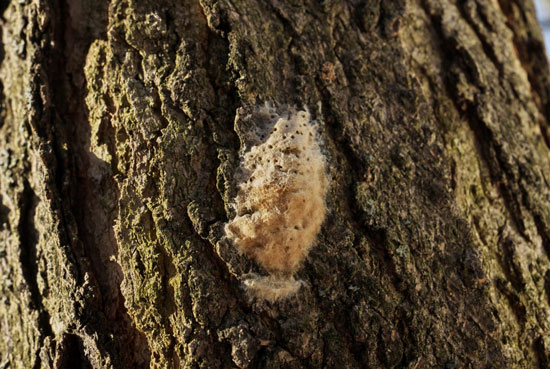
Eliminate Overwintering Pests
Clients might think in the winter there are no lawn or landscape matters to concern themselves with, but this a prime time to monitor and eliminate overwintering pests that can become a problem in the spring.
While one can hope the freezing temperatures will kill off all of these troublesome insects, many can survive as egg masses or by seeking shelter in plant debris. Take the time to educate your customers on why overwintering insects should be handled now, and you’ll also have fewer headaches to deal with come springtime.
Types of Overwintering Insects
While not all overwintering insects are harmful, and some are beneficial, others can be quite detrimental to plants or a particular nuisance. These are some of the common culprits to be on the lookout for.
Defoliators like gypsy moths, Eastern tent caterpillars, and fall cankerworms lay overwintering eggs masses on twigs, branches, and trunks. Gypsy moth egg masses are tan-colored lumps about the size of a nickel or a quarter. Eastern tent caterpillar egg masses are 150 to 400 eggs covered with a shiny, black varnish-like material and encircle branches about pencil-size or smaller in diameter. Fall cankerworms have single-layered masses of flower-pot-shaped eggs on smaller branches.
Bagworms also pass the winter as eggs, but their eggs are inside bags that served as cocoons for last year’s females. Adelgids like the Eastern spruce gall, cooley spruce gall and hemlock wooly adelgid overwinter as immature females.
Soft scales like Tuliptree, Magnolia, Fletcher, Calico, Lecanium, Cottony Maple, and Cottony Camellia all overwinter as nymphs on twigs or branches on deciduous trees and shrubs. Armored scales overwinter as first instar nymphs and adult females.
Most aphids overwinter as eggs, but some overwinter as adult females. While aphids often don’t cause permanent plant damage, their sticky honeydew can result in sooty mold appearing on the affected plants. This can drastically reduce the vigor and beauty of ornamental plants.
Control Methods
Fall cleanups not only help provide a tidy landscape going into the winter, but they can also remove hiding places for some overwintering insects. Plant material infested with insects should be disposed of rather than composted.
Tilling the soil to incorporate amendments can also unearth pests overwintering in their pupae stage, like seed, root, bulb maggots, and leaf miner species.
For the insects with overwintering egg masses on plants, these can be removed manually or pruned out. If there are too many egg masses, or they cannot be reached, you can note treatments will be needed next spring.
Dormant oils can also be sprayed on shrubs and the bark of trees to suffocate the insects before they become active in spring. Dormant oil is effective for scales, aphids, bagworms, and more. Note that dormant oils should not be sprayed when there is a danger of freezing or if plants have already emerged from dormancy.
2023-24 Catalog
|
2023
Snow Prep Guide
|
Being positive won’t guarantee you’ll succeed. But being negative will guarantee you won’t.
—Jon Gordon
|